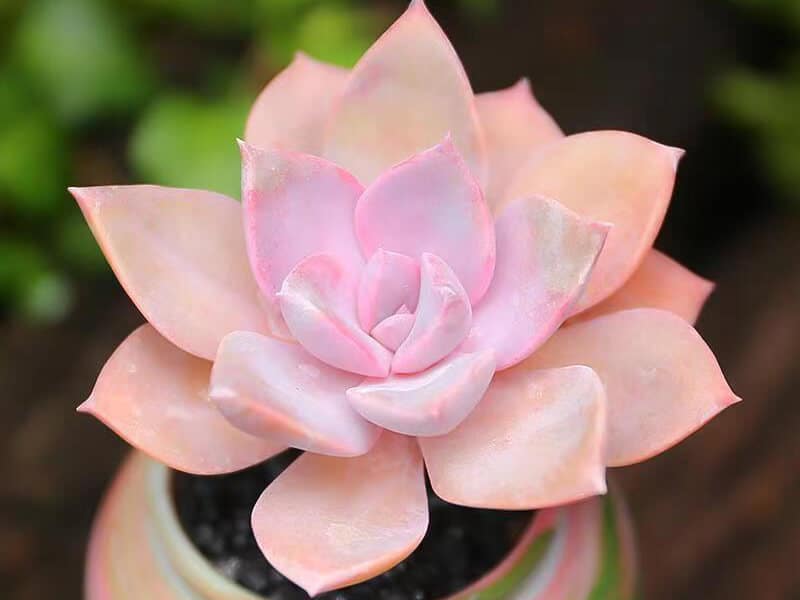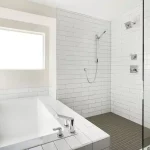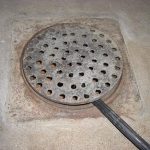The Graptoveria ‘Douglas Huth’ is an alluring, pearlescent-toned succulent with pink rosettes all over it. The succulent is a hybrid cross of Graptopetalum Paraguayense and Echeveria Gigantea. Its rosettes are small with hefty leaves that are pointed from the ends. The central part of rosettes takes up bright pink hues, while the leaves are colored in shades of light pink.
The pinkish hues of the leaves tend to brighten if the plant is exposed to the sun for long hours. When kept in the shade, the plant takes up blue-green hues. After reaching full maturity, the plant has a height of around 6 inches.
To grow the best-looking Graptoveria ‘Douglas Huth’, you must monitor growing conditions and water-sunlight balance. Spring is the time for this flower; it blooms most beautifully as ever and has the most ethereal pink shade. The fleshy leaves look stunning, which makes this plant a perfect addition to your gardens, lounges, and pathways.
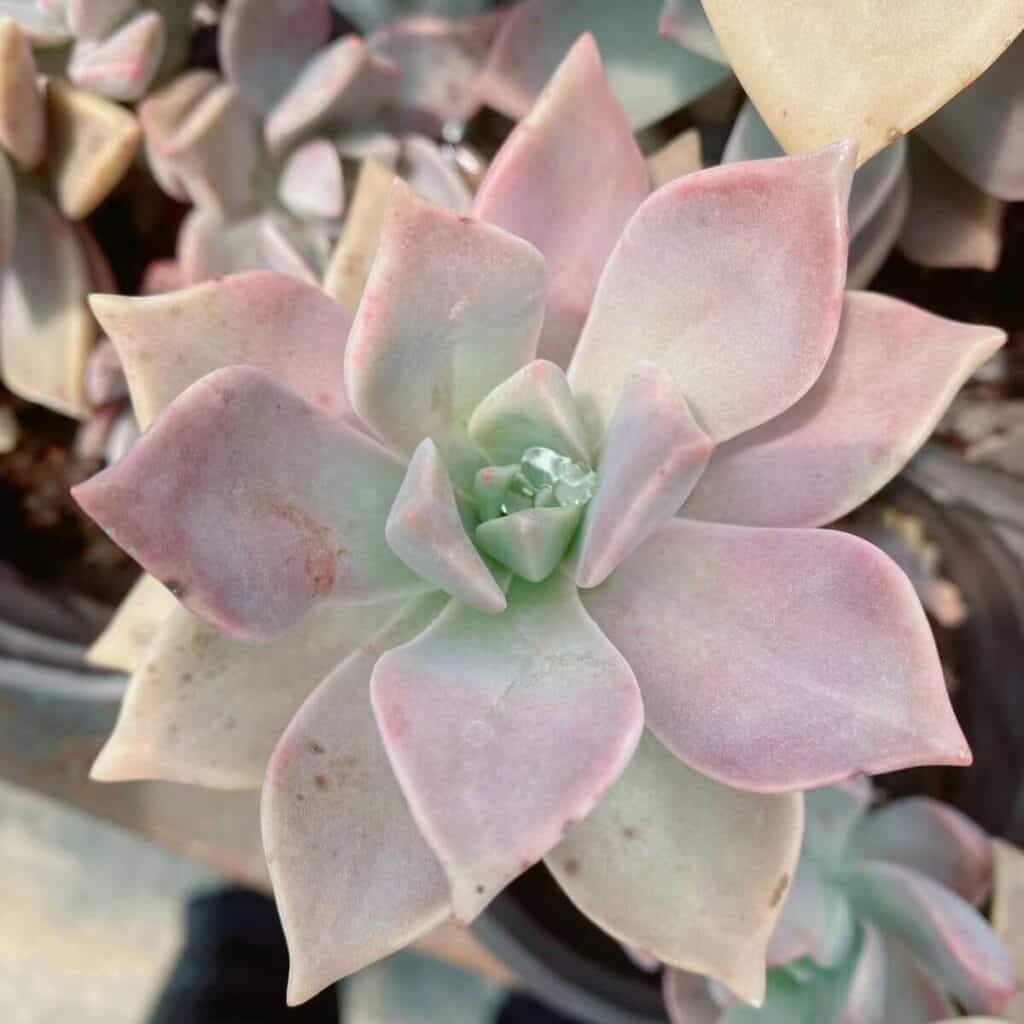
Below are a few factors you should consider when growing Graptoveria ‘Douglas Huth’.
The Care For Graptoveria Douglas Huth
Light
Like most succulents, the Graptoveria ‘Douglas Huth’ shines brighter on days when it receives the most sunlight. If the plant is deprived of sunlight for a few days, the leaves look worn out, and their color starts to fade. However, make sure you don’t expose the plant to scorching sunlight as you don’t want it to get sunburned. Instead, place it outdoors in the mornings because the morning sun has a burst of bright but cooler sunshine.
If you are keeping the Graptoveria ‘Douglas Huth’ indoors, place it near the windowsill such that it receives properly filtered sunlight. If you think the sunlight isn’t enough, you can use artificial lighting to fulfill the deficiency.
Water
Water is essential to consider when taking care of your plants. However, too much is always a bad idea for succulents. The Graptoveria ‘Douglas Huth’ does not require a lot of water.
In the summers, it usually requires water once a week when the soil dries up. And in winters, since there’s more moisture and the weather is cold, watering the Graptoveria ‘Douglas Huth’ once in two weeks is enough.
To ensure you provide sufficient water to your plant and only when there’s a requirement, check if the soil is wet or has moisture.
Wet soil indicates that the plant does not require water. Only water it when the soil is completely dried up, and ensure you don’t overwater it. Letting water sit on your plant is detrimental and can cause root rots and other diseases.
For succulents, there is a direct relationship between the amount of water it gets and the amount of sunlight it receives.
Fertilizer
The Graptoveria ‘Douglas Huth’ can do pretty fine without fertilizers, given that it receives proper sunlight and water and is planted in good soil.
However, if you feel there is a need for fertilizer, you can use it but make sure it’s only 25% strength and not more than that. Diluting is necessary to reduce the severity of strong chemicals that can potentially harm your plant!
Temperature and Humidity
The Graptoveria ‘Douglas Huth’ loves the sun and prefers to live in warm environments, but it can survive in zones having temperatures as low as 6°C. It can survive in USDA zones 9a – 11b.
In humid environments, the soil has moisture, making the plants’ water requirements low.
Soil
A well-drainage soil is porous and grainy enough to allow air circulation. For the Graptoveria ‘Douglas Huth’, use a good potting mix of cactus and succulent soil with 50% to 70% mineral grit.
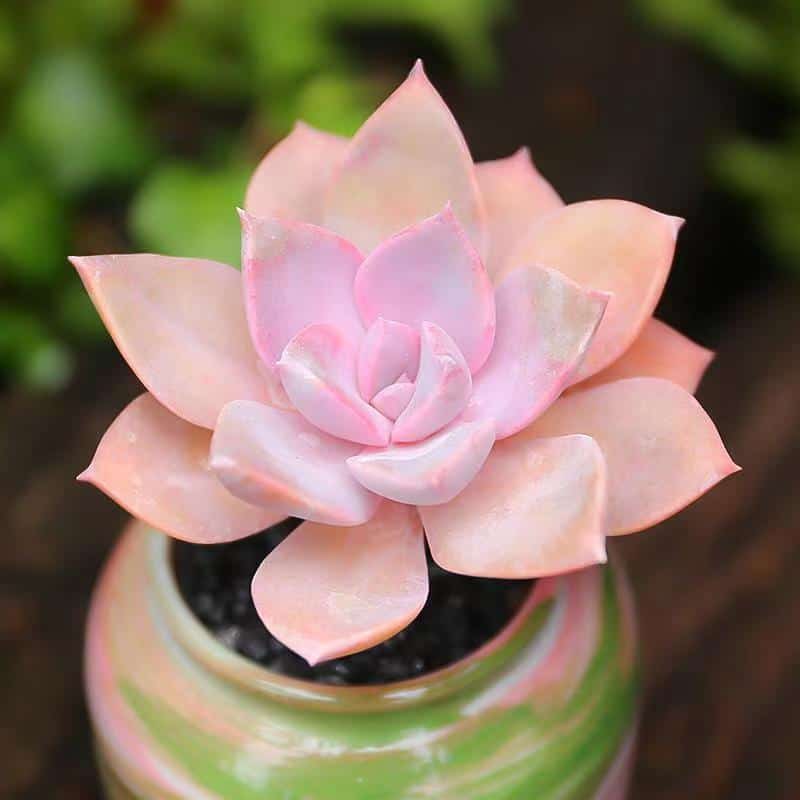
Propagation of Graptoveria ‘Douglas Huth’
Leaves and seeds are common ways to propagate the Graptoveria ‘Douglas Huth.’
With seeds, the plant reaches maturity after months; hence, this propagation method is slow. Propagation with seeds is recommended for planting succulents in outdoor environments.
Propagating with leaves is faster and works well for indoor and outdoor plants. What you have to do is cut a full, big, chunky leaf from the mother plant and make sure you cut off all of it using a sharp knife. Then you have to leave it for some days to allow it to be callous. Then, you must use well-draining soil to plant it, ensure it gets bright sunlight, and water it frequently (when the soil dries out).
Plant and Pests Diseases
Usually, for most of its lifetime, the Graptoveria ‘Douglas Huth’ remains free from diseases. However, it rarely happens that they fall victim to some notorious plant and pest diseases.
Plant Diseases
Root rot is a common plant disease that doesn’t spare the Graptoveria ‘Douglas Huth’. It’s mainly caused by overwatering.
Pests
Mealybugs, spider mites, and scale insects can take over your plant and damage it. Mealybugs appear in white wool and take up every corner of the plant. To eradicate it, dab the plant using isopropyl solution. Spider mites appear as tiny yellow spots all over the leaves. Spray water on the leaves to get rid of mites. Scale insects are small, brown-colored insects that are found on the stem. Again, use an alcohol solution to get rid of them.
Conclusion
The Graptoveria ‘Douglas Huth’ is a great succulent to enhance the beauty of your homes. Moreover, it is very easy to grow and care for yourself. To have a bright-colored, pretty pink succulent in your home, you must provide sufficient water and sunlight and plant it in good drainage soil!

